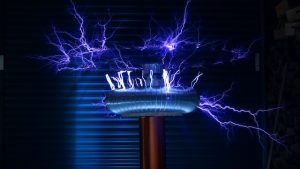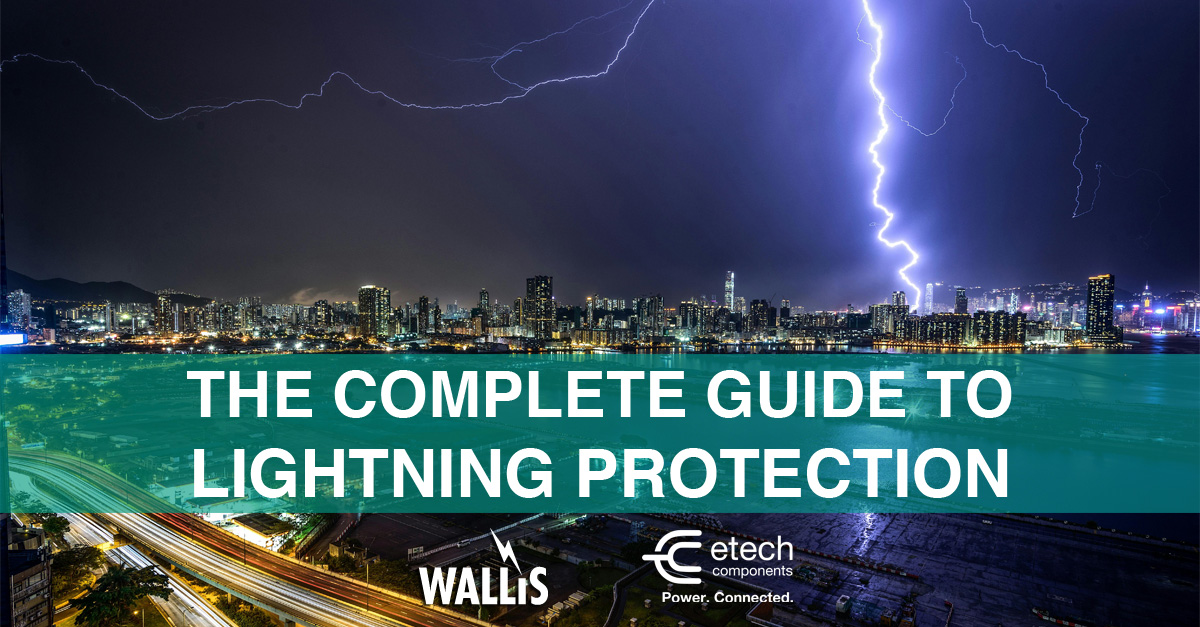The Complete Guide to Lightning Protection
Introduction: What is a Lightning Protection System (LPS)?
Lightning strikes and electrical surges that follow them are one of the major causes of weather-related mortality worldwide and cause hundreds of injuries in the UK every year. Furthermore, they are a huge concern for building landlords and managers since they can cause significant material and structural damages. Lightning Protection is, therefore, a vital and legal requirement your structure needs to meet in order to prevent any potential injuries and damages.
Lightning Protection Systems include all the necessary components, equipment and materials in place to protect buildings, aircraft, other structures and most importantly people from damage and injuries. Many different places use systems like that for various different purposes. From tall structures like towers or skyscrapers, to high-voltage power lines and other places such as stadiums and airplanes.

When/ why is Lightning Protection required?
LPS’ purpose is to minimise the risk of damage to the external & internal parts of the structure from a lightning strike, by safely dissipating the current to the earth system. The External Protection captures the lightning current and conducts it safely to earth. The Internal Protection, with use of transient surge protectors, minimises the damage to sensitive equipment and bonding of conductive services and ensures a safe path to earth. A complete LPS can only be achieved when both safety measures of Internal & External LPS are employed to the structure based on the Risk Assessment.

Basic Principles of Lightning Protection
- Capture/ Intercept the Lightning Strike (Air Termination System)
- Safely Conduct the Lightning current to Earth (Down Conductor System)
- Safely & effectively dissipate the Lightning current into the Ground (Earth Termination System)
- Provide Equipotential Bonding to prevent dangerous sparking
- Protect against the secondary effects of lightning caused by surges & transients (i.e. SPD’s)
Lightning Protection Strategy
The normal strategy in achieving protection is capturing the lightning at a preferred point by the use of air terminations. Then to conduct it via low-impedance down conductors and earth electrodes to a low resistance earth of <10 Ohms (less than ten Ohms).
Both air terminations and down conductors are spaced at regular intervals to form a mesh of conductors around the perimeter of the building and roof, known as a Faraday cage. They are joined together by specially produced clamps and fixings or welding.
Lightning Protection System’s Design Considerations
An LPS’ design takes many factors in consideration and is based on established standards for risk assessment. Some of these factors are: geographical location, local terrain, soil conditions, size and height of building, type of material used in construction, type of material stored in the building and use of building .
Prior to the design of the structural LPS, you need to carry out the Risk Assessment. This happens to determine the Class of LPL required depending on IEC/ BS EN 62305 standards or internationally accepted standards. For a full list of Product Standards that AN Wallis’ solutions meet, please advise the brochure below:
Maintenance & Life of an LPS

It is important to properly maintain an LPS to ensure it retains its ability to conduct the same current carrying capacity, as it did after its original installation. Regularly check earth rod resistances to find any potential damages and avoid risks.
Corrosion and fault currents can cause high resistance joints leading to overheating. However, if you correctly install and maintain an LPS, it should last for many years.
Please use the information of this article as a general guide and not to perform designs on your own. A. N. Wallis does not accept responsibility for errors or omissions. If necessary, Internationally recognised European and British LPS standards contain more detailed information on LPS designs for your assistance.
AN Wallis Lightning Solutions
AN Wallis & Co Ltd established in 1946 is a world-leading manufacturer of Earthing, Lightning Protection, Exothermic Welding and Low Voltage (LV) Surge Protection products and solutions. They also offer expert design services for Earthing & Lightning Systems, complying with National & International standards. Their Systems & Solutions minimise the risk of damage to the external & internal parts of a structure from a lightning strike, while also reducing the risk of injuries by safely discharging the high voltage to the earth system.
Check the full range here View Catalogue here
Have you read our article on Earthing/ Grounding and the Elpress Deep Earthing System?
Our Team will be ready to answer any questions you may have regarding this range or any products needed for your project.
For additional information, contact us at:
sales@etechcomponents.com or +44 (0)1744 762 929

